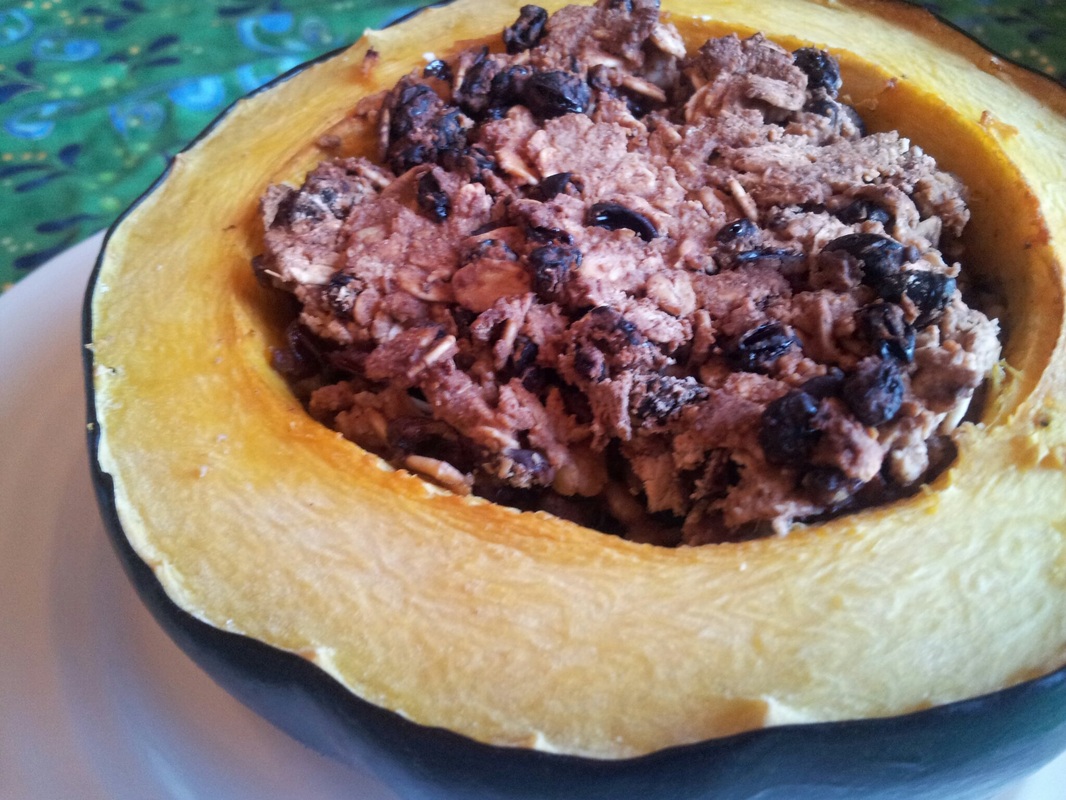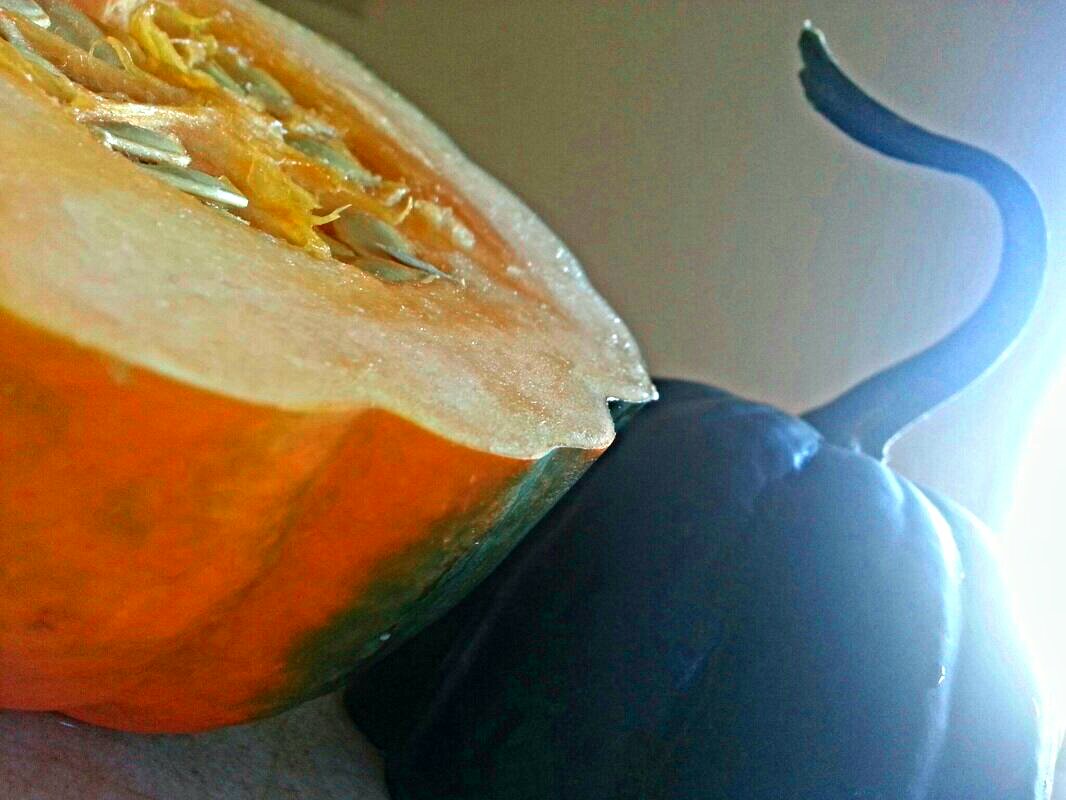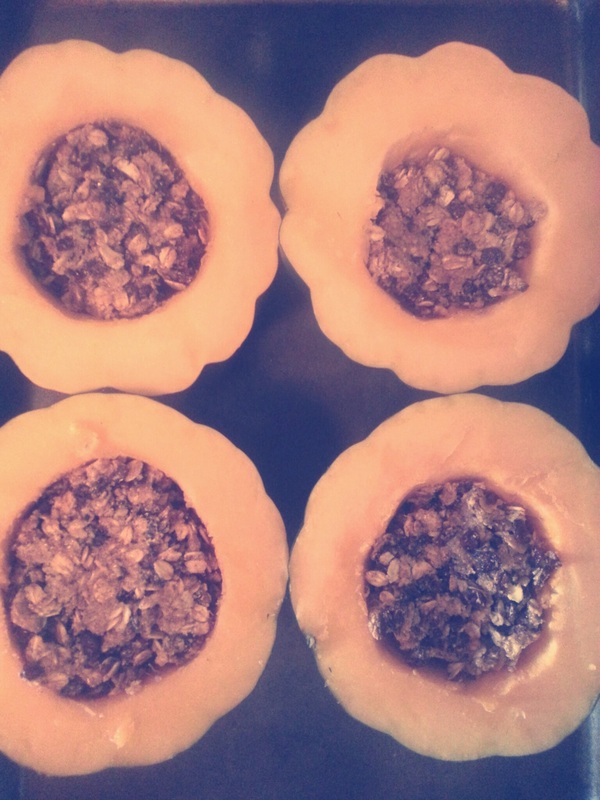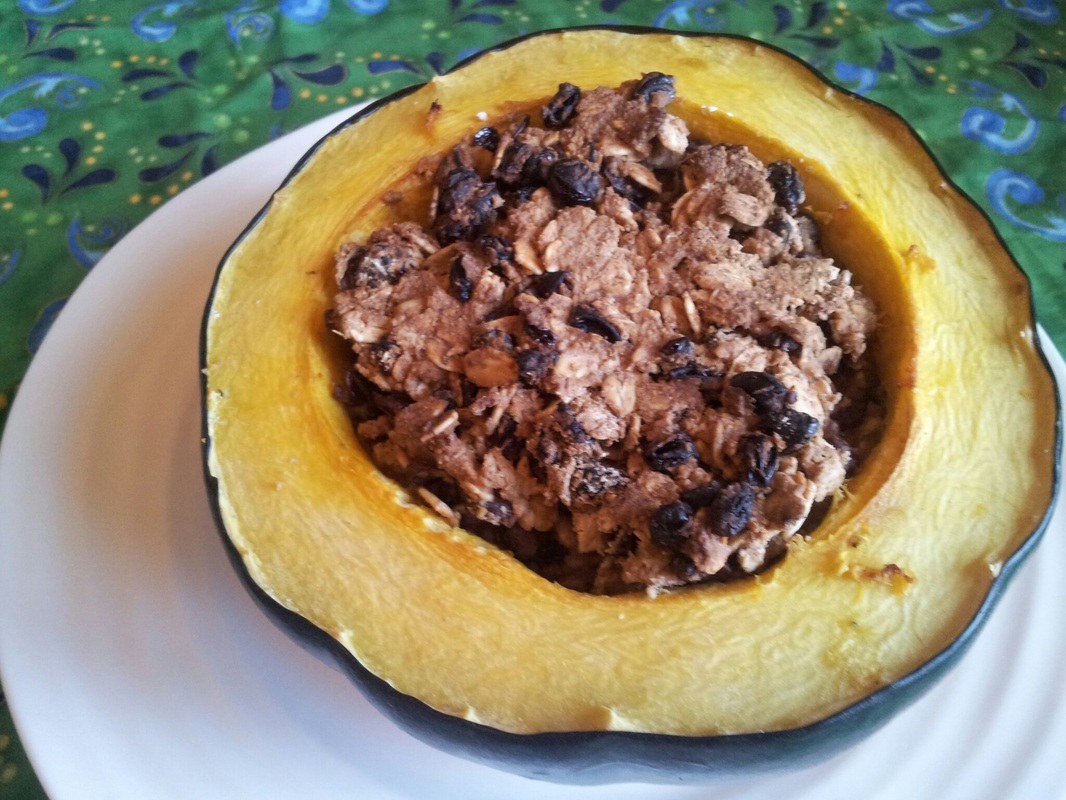I hope you all enjoyed a peaceful Sunday with your family. At Church we talked about family history. I adore family recipes, which poses a challenge for me since most family recipes now require some serious substitutions for me. I wonder what it would be like to taste food prepared from scratch by the early pioneers before the days of genetically modified wheat and synthetic preservatives. Here's to creating new traditions as we look forward to our future of family meals and raising healthy children.
One of the best things about autumn is that the vegetables taste like dessert. I have made a good few variations of this wonderful baked squash and am yet to find it to be anything other than excellent. As a bonus, it is very filling! Maybe it's because I'm a mom, but I love leftovers. In fact, I love leftovers so much, I doubled this recipe yesterday. When you have a food intolerance, having prepared food on hand is such a blessing.
Ingredients:
1 acorn squash
1 cup gluten-free oat flour*
1 cup gluten-free rolled oats*
2/3 cup dried barberries, currants, or raisins**
2/3 tsp cardamom
1 tsp nutmeg
1.5 tsp cinnamon
1 tsp honey***
1-2 tsp coconut oil (optional, for a softer stuffing)
1/3 cup water
3/4 tsp apple cider vinegar or juice of half a lime
*Oats do not contain gluten, but most oats are processed on the same equipment as wheat and are not safe for persons who cannot have gluten. I used Only Oats brand, which processes their oats in a gluten free environment.
**Barberries are considered a health food and are a great source of Vitamin C. They also improve immune function. In culinary use they are quite tart, almost lemony. Barberries grow naturally in Alberta and can be wild-harvested. If you don't have barberries, currants or raisins would work great. As currants and raisins are sweeter, cut the honey and use more lime to maintain the sweet-sour balance.
***Go with raw, unpasteurized honey and make sure you speak directly with the supplier. Honey harvested where bees have access to corn fields leads to problems for corn intolerant people. I love buying my honey at the farmer's market. Pasteurized honey has lost its health benefits and may contain corn syrup.
1 acorn squash
1 cup gluten-free oat flour*
1 cup gluten-free rolled oats*
2/3 cup dried barberries, currants, or raisins**
2/3 tsp cardamom
1 tsp nutmeg
1.5 tsp cinnamon
1 tsp honey***
1-2 tsp coconut oil (optional, for a softer stuffing)
1/3 cup water
3/4 tsp apple cider vinegar or juice of half a lime
*Oats do not contain gluten, but most oats are processed on the same equipment as wheat and are not safe for persons who cannot have gluten. I used Only Oats brand, which processes their oats in a gluten free environment.
**Barberries are considered a health food and are a great source of Vitamin C. They also improve immune function. In culinary use they are quite tart, almost lemony. Barberries grow naturally in Alberta and can be wild-harvested. If you don't have barberries, currants or raisins would work great. As currants and raisins are sweeter, cut the honey and use more lime to maintain the sweet-sour balance.
***Go with raw, unpasteurized honey and make sure you speak directly with the supplier. Honey harvested where bees have access to corn fields leads to problems for corn intolerant people. I love buying my honey at the farmer's market. Pasteurized honey has lost its health benefits and may contain corn syrup.
Procedure:
- Preheat oven to 350 degrees farenheit.
- Scoop seeds from your squash. If you have a few extra minutes, separate the seeds and bake with sea salt.
- In a bowl, combine remaining ingredients to achieve a uniform mixture.
- Stuff the squash and bake it for about 45-60 minutes.
Serves 2
Variations: Try adding chopped apples, freshly squeezed orange juice, chiffonaded mint, other dried fruit, seeds, or chopped nuts. Try it with curry powder and shredded coconut in place of the cardamom, nutmeg, and cinnamon. Try it with chopped nuts, chopped dried fruit, minced citrus peel, grated ginger, nutmeg, and banana or dates for a mincemeat-inspired variation. Add a pinch of salt to any of these variations if it is to your taste.
Food Storage Applicability: Squash store well for part of the year, especially with the help of a root cellar or cold room. Everything else should be shelf stable.
Word of Wisdom: I like that this recipe uses seasonal produce and has a strong ratio of vegetable to grain. If you want to decrease the amount of grain, add some nuts to replace some of the oats.
Gluten and Corn Free: I haven't had a problem with any of these ingredients. Do ensure your honey is corn free or substitute a safe sweetener for you.
A note on corn and oats: When I refer to corn on this website, I am referring to maize. Other crops, including oats, are called corn in some parts of the world. Check out what the Bible Dictionary says about corn:
Food Storage Applicability: Squash store well for part of the year, especially with the help of a root cellar or cold room. Everything else should be shelf stable.
Word of Wisdom: I like that this recipe uses seasonal produce and has a strong ratio of vegetable to grain. If you want to decrease the amount of grain, add some nuts to replace some of the oats.
Gluten and Corn Free: I haven't had a problem with any of these ingredients. Do ensure your honey is corn free or substitute a safe sweetener for you.
A note on corn and oats: When I refer to corn on this website, I am referring to maize. Other crops, including oats, are called corn in some parts of the world. Check out what the Bible Dictionary says about corn:
Corn
Seven different words in Hebrew and three in Greek have been translated as “corn” in the KJV. They are words referring to the cereal grains used for food, such as wheat or barley. Corn in English refers to the cereal grains most common in a given region, such as wheat in England, oats in Ireland and Scotland, or maize (Indian corn) in Australia, Canada, and the U.S. Thus “ears of corn” in the English of the KJV would be called “heads of grain” in the United States. Indian corn (maize) was known and used only in the Western Hemisphere prior to the discovery of America; it is not the corn of the Bible.
I didn't realize this until I was talking to a vendor at my local farmer's market about corn. He was of obvious scottish heritage and wanted to know if by corn I meant corn on the cob or oats. It was by chance that I happened across the entry in the Bible Dictionary only a few days later. This may be good to remember if you ever find yourself needing to ask questions of somebody with a different background or if you are travelling abroad.




 RSS Feed
RSS Feed